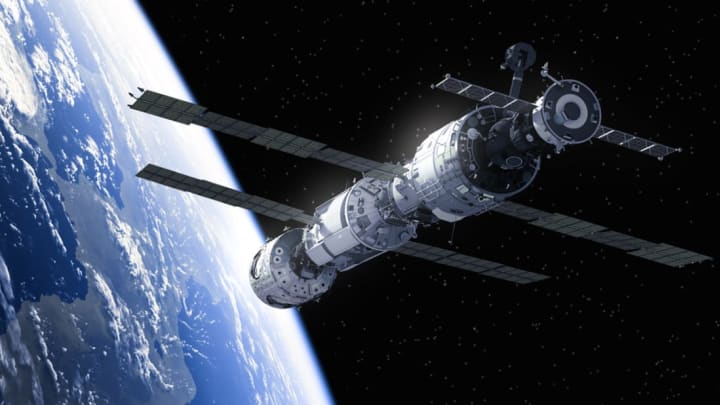
How does the ISS keep its orientation?Robert Frost:
Nominally, attitude control is provided by four control moment gyroscopes (CMGs). Each CMG contains a wheel that is 220 pounds (100 kg). That wheel spins at 6600 rpm, resulting in an angular momentum of 3500 ft-lb-s (4742.5 N-m-s). The basic idea is that if a torque induces a rotation on the ISS, those wheels can rotate about their gimbals to change the angular momentum of the ISS, creating a counter torque. Using CMGs is much more subtle than using thrusters, so microgravity experiments are not impacted. CMGs do have limits, though, so thrusters can assist, if needed. That assistance is needed whenever the torques are large.
To minimize thruster assists, during quiescent operations, we do a type of attitude control called momentum management (MM). This is done by maneuvering the ISS to a torque equilibrium attitude (TEA) that was analyzed by the ground a year or more in advance. This TEA is an attitude that, with meanderings of up to 15 degrees, will result in the gravity torques and atmospheric torques adding up, over an orbit, to close to zero. The CMGs then take up the slack to make that zero.
We often can't be in a TEA during critical operations. For those we need to be in an attitude hold (AH). An example of this is a docking or berthing. Attitude holds are challenging because they require a lot more work, often too much for the CMGs to handle alone, and yet firing thrusters during critical operations can be problematic.
For these operations we design a matrix for the flight rules to ensure safety. For example, we do not allow thrusters to fire whenever the end of the robotic arm is within 2 feet (0.6 m) of the vehicle. The last thing we need is for a thruster firing to shake the arm and cause it to hit the side of a module, puncturing the module. If the timeline indicates the arm will be that close, ADCO (the attitude control flight controller) will inhibit thruster assist.
Dockings and berthings can produce sudden changes in momentum. During these activities we inhibit the entire attitude control system to ensure we do not introduce forces that could damage a docking or berthing mechanism. You might notice, on NASA TV, that the vehicle can get considerably out of attitude at these times.
The attitude control computer (GNC MDM) contains the software that does all of the necessary calculations for attitude control. It takes in the actual attitude and subtracts the commanded attitude to determine the error it needs to correct. It knows the rates of the ISS. That is very sensitive, so sensitive that we can tell when the crew wake up by watching the behavior of the CMGs as the crew start to move around the vehicle. The software also needs a set of user provided parameters such as the vehicle mass properties and inertia tensors. These are located in data slots called CCDBs (controller configuration databases). We have a stockpile of these CCDBs for different vehicle configurations. For example, if a Progress cargo vehicle arrives and docks to the Russian Segment, we will have a CCDB slot designed for that configuration. When it leaves, we will swap to another one.
This post originally appeared on Quora. Click here to view.
